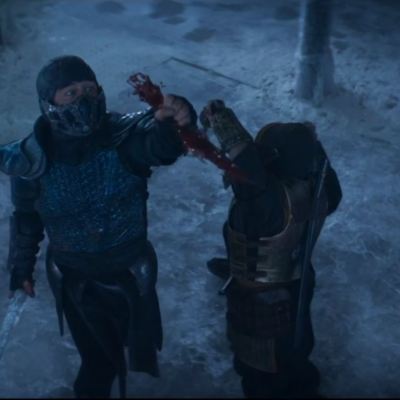Inside the Mortal Kombat Movie’s Bloody Love Letter to Martial Arts
After a visit to the Mortal Kombat movie set, I'm happy to tell you why that strange sense of optimism you have about this video game movie is more than a feeling.
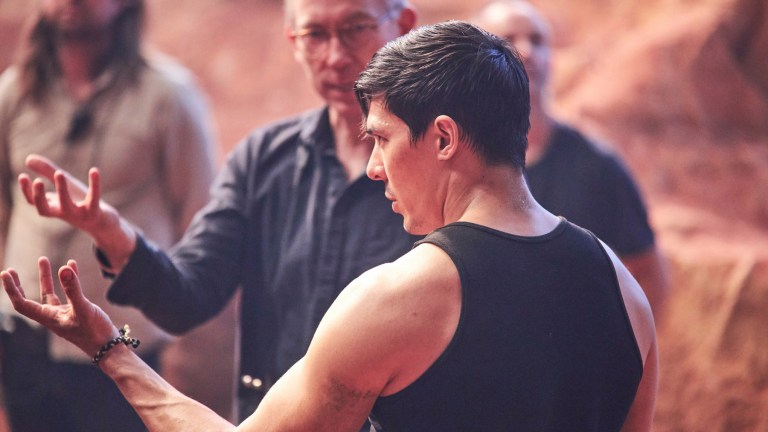
About 10 hours into a November 2019 flight to Australia and the set of Warner Bros. Mortal Kombat reboot, I started to ask myself whether this was all worth it. I loved the original Mortal Kombat movie about as much as anyone unironically can, but the fact remains that the history of live-action video game film adaptations is paved with disappointment. Even the best movies in that field have earned their reputation largely by exceeding low expectations.
After nearly 30 years of failed attempts, it’s hard to even picture what a good live-action video game movie might look like. What is it about the transition from sprites to screen that makes this process so difficult? Is this a pursuit that is, in some ways, doomed to be dictated by those who see such films as another piece of merchandise? What will it take to finally break the curse? Those questions raced through my jetlagged brain as I finally made it to Adelaide and prepared to see what awaited me on the other side of the world.
Shortly into my visit, I was taken off my feet by a line that hit me like an MK player mercilessly spamming a leg sweep. It came in the form of this line from producer Todd Garner that reshaped my expectations and set the tone for what proved to be something that was very much worth the trip and perhaps worthy of your own wait:
“I think it’s great that there are a lot of characters, a lot of lore, and let’s do it all well. But really, people want to fuck each other up.”
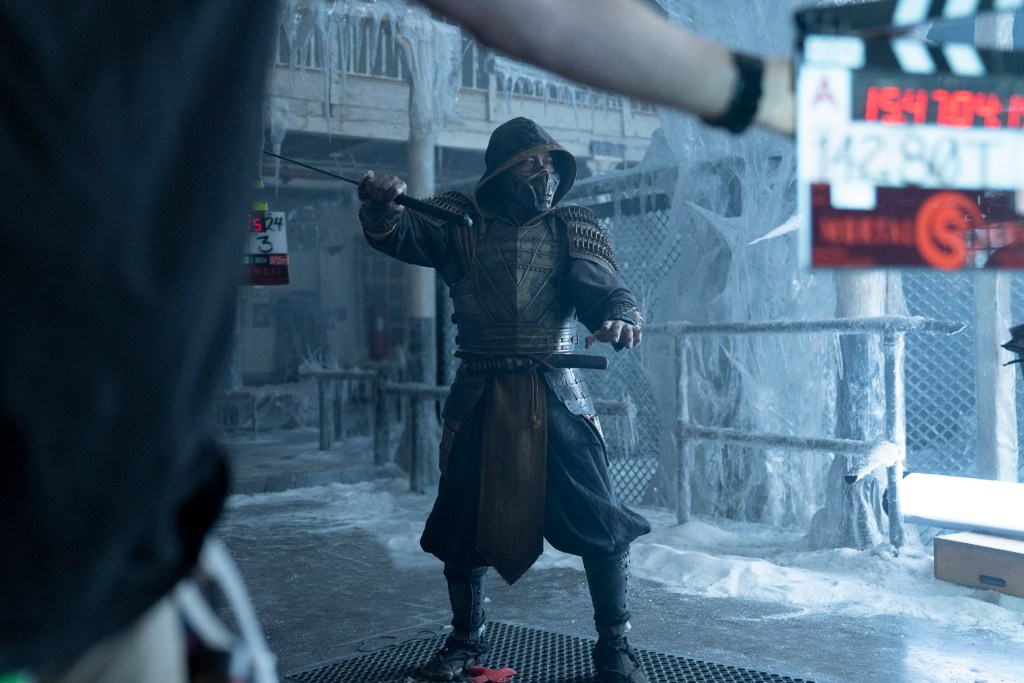
Gore and Lore
Garner was, of course, mostly joking. Yet, there is a truth in many jokes, and the truth in this one seemed to be that managing what the Mortal Kombat canon has become can be a daunting task. It’s certainly not made any easier by the fact that there haven’t been many undisputedly great video game movies for the team to work with and use as precedent.
In lieu of notable live-action video game adaptations that made good on their ambition, the film’s production team turned to a source that most would agree has.
“It’s like the Marvel Universe…it’s endless,” says Garner of the Mortal Kombat game franchise. “So we started from the premise ‘What would Marvel do?’”
It’s a useful question that the upcoming Mortal Kombat movie answers in fascinating ways. For instance, as Garner noted, the MCU didn’t start with The Avengers; it started with Iron Man. That film allowed Marvel Studios to ease viewers into a project that was, in its own ways, also somewhat unprecedented. Similarly, the Mortal Kombat movie uses the character of Cole Young as a kind of audience surrogate. He’s a new face in this universe who is also trying to figure all of this out.
It’s all part of a delicate balancing act that requires the cast and crew to constantly ask themselves how this movie looks to a diehard fan and how it will look to someone who is just coming into this.
“There are five million people that play this game religiously, but there are 100s of millions of people in the world,” Garner says. “We didn’t want the other 95 million people to go, ‘What the fuck is this. What is this tone, what the fuck is happening?’”
It’s easy to understand how fans could quickly become overwhelmed. If you haven’t played the more recent Mortal Kombat games, you may be surprised to learn that they’ve adopted a complex serial storytelling narrative that combines years of mythology as well as the events of the most recent games. If you tried jumping into Mortal Kombat 11’s interdimensional, time-jumping story, without at least an explainer of what came before, you’d probably think it was madness. Amusing madness, perhaps, but madness nonetheless.
As it turns out, even Mortal Kombat director Simon McQuoid had a lot of catching up to do.
“I feel like I went to Mortal Kombat university,” says McQuoid regarding the experience of learning the intricacies of the franchise. “I also surrounded myself with a lot of people who know a lot more about this than me.”
In the same way that 1995’s Mortal Kombat benefited from director Paul W.S. Anderson seeking and utilizing fan and crew feedback, McQuoid’s own desire to surround himself with lifelong MK fans is just one of the ways that the crew is determined to ensure they don’t make the mistake others have before them by straying too far from the desires of those who helped make the Mortal Kombat franchise worthy of adaptation in the first place. His efforts ultimately come down to honoring an important word.
“The word I use a lot is ‘respect,’” says McQuoid. “Respect for the fans, respect for the characters, and respect for the canon. The execution ultimately takes that into consideration from the absolute bedrock of listening to and understanding the fans.”
Of course, as Garner previously eloquently noted, what many Mortal Kombat fans are looking for is over-the-top violence executed with flair. That is a big part of what made the original Mortal Kombat stand out in a crowded arcade scene, and it is certainly one of the qualities that have stayed with the series as it has evolved into this surprising vehicle for complex narratives and diverse characters.
Fatality!
Of course, you can’t talk about Mortal Kombat violence without coming around to fatalities. What began as now strangely humble decapitations and spine extractions has evolved into a bloody ballet of highly choreographed violent ends that account for the lore and ability of every character. It’s something that was largely missing from the 1995 adaptation, and it’s something that Garner admits can be tricky to get right.
“There’s crazy shit you can do in the game,” Garner says. “The problem with the fatalities, in general, is…I’m under the restrictions of the Motion Picture Association of America so I have to live inside those rules.”
In case you haven’t seen the recently released trailer, let me assure you now that the MPAA has not scared the team away from incorporating fatalities and MK’s other, bloodiest elements. In fact, McQuoid is practically at sea with the amount of blood on set.
“I don’t know the gallon number, but I’ve seen drums of blood sitting around,” McQuoid informs his audience of gorehounds with a smile.
So yes, there will be blood and lots of it in the Mortal Kombat reboot, but the team isn’t relying on the presence of blood alone to fulfill their equally important mission of telling a Mortal Kombat story as compelling as the ones featured in the games. Actually, they recognize that there are times when extreme amounts of violence can work against the dark tones that help make the franchise’s universe so compelling.
“When I wanted a serious moment I didn’t want it to get comedic because we’re swashing blood,” McQuoid says. “It’s a tonal thing…you really need to feel it all instead of having people say ‘Oh, that’s funny.’”
Besides, there are other ways to convey the series’ violent nature and brutal style that doesn’t necessarily require a drum of blood. From the first game in the franchise, Mortal Kombat has nodded to at least the cinematic history of martial arts. Whereas that series initially struggled to convey the fluidity and complexity of the best martial arts fights, though, the MK movie team has set a high bar for themselves.
“The first thing I said to [stunt coordinator Kyle Gardiner] was “Okay, Kyle, you have to make the best fights that have ever been on film,” reveals McQuoid.
To anyone with a passing familiarity with the best fight scenes in film history, that idea has to come across as an absurd bit of hype. However, it starts to make a lot more sense when you look at the cast they’ve assembled.
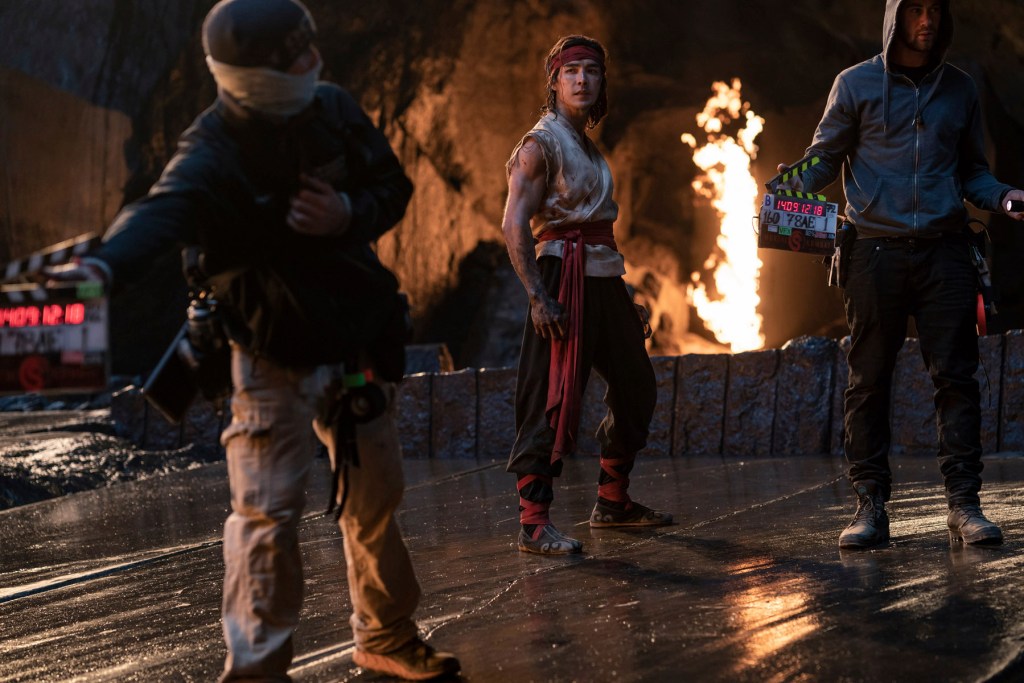
Choose Your Fighter
For a generation of fans raised on ‘80s action films and many major Hollywood genre productions that came after, it’s become somewhat easy to buy into the idea that untrained or largely untrained actors, bodybuilders, and models are the biggest badasses on the big screen. There’s a degree to which that’s what actors are supposed to do, but anyone who grew up on Jackie Chan and Bruce Lee or later found films such as The Raid and Ong-Bak can tell you that there’s nothing quite like watching uniquely talented martial artists push the boundaries of fight scenes by translating their real-world talents into cinematic splendor. In fact, the original Mortal Kombat arcade game was partially inspired by a desire to make a game that felt worthy of a Jean-Claude Van Damme action film.
When it comes to getting Mortal Kombat right, then, there’s little doubt that the only way to go was to cast an all-star collection of martial artists and trained fighters rather than teach a cast of movie stars to look like they can do the things these guys can. However, I can’t emphasize enough just how crazy it was to watch even just snippets of what this essential superteam of martial artists push themselves to do when you put them in a room. Even those who have spent a considerable amount of time around the cast still express awe at what they’ve seen.
“I’ve never made a movie like this before with this much fighting in it,” says Garner. “I don’t know what’s going on half the time, but they really are the best in the business…It’s so fast and even the camera is like, ‘Guys, can you slow down a little bit?’”
In some ways, the heart of this assembly feels like Sub-Zero actor Joe Taslim. As a renowned martial artist who many of us first saw in The Raid: Redemption, many action fans know that Taslim is the real deal. What you may not know is that Taslim is something of a Mortal Kombat superfan. His name was even tossed around a few times on the shortlist of best MK players on-set, as well as by some who suggested that Taslim helped set the pace (and raise the bar) for the speed of the action sequences.
Then you have Tadanobu Asano as Raiden. As a legend of the Japanese film scene who has garnered more international acclaim in recent years by virtue of his work in 47 Ronin, Battleship, and the Thor films, Asano feels uniquely capable of playing the thunder god whose abilities sometimes set the standard in a universe of powerful fighters. He embodies the character so clearly that he’s already got his eye on the out of universe competition
“Yeah, I can fight [Chris Hemsworth],” suggested Asano with a smile at the prospect of a Thor vs. Raiden film.
There also Max Huang who portrays Kung Lao: a beloved fan character who was sadly missing from the previous live-action adaptations. For him, the chance to finally bring that character to life echoes his own desire to further his transition from a celebrated stunt coordinator to a bonafide action hero.
“People like Bruce Lee were my heroes,” says Huang. “The ultimate goal was to become an actor, but there were few chances. A lot of times, it would just be a one-liner and that was it. These last few years I figured ‘you only have one life,’ so I just went for it.”
Few people are more qualified to speak on that subject than Liu Kang actor, Ludi Lin. As an advocate for representation in Hollywood, Lin has previously said how a lack of representation or even the wrong kind of representation can lead to feelings of shame and even isolation. For Lin, working with this many talented martial artists on a major Western production isn’t just a chance to showcase his own abilities; it’s a chance to help millions feel like they’re being seen.
“Look, 60% of the world is Asian. A quarter of the world is Chinese,” says Lin. “I just don’t understand why there can only be one [in Hollywood films].”
Increased representation is always important, but at a time when violence against Asian Americans is on the rise, it stands to reason that the portrayal and prominence of Asian actors on film may be on more minds than ever before. So far as that goes, Mortal Kombat is uniquely positioned to not only showcase Asian heroes but pay respect to the clear Asian influences on the Mortal Kombat series in a way that the MK titles (especially the older installments) didn’t necessarily do before.
“From my experience working with Simon [McQuoid], I’ve never worked with someone that’s so serious about being that authentic for another culture,” says Lin. “Just walking on set…on this film, there are so many different types of people of different ethnicities, different origins, and different backgrounds. It really represents the world.”
I could go on. Legendary Japanese action star Hiroyuki Sanada as Scorpion, the beloved Chin Han as Shang Tsung, rising star Mehcad Brooks as Jax…even non-action stars or martial artists like Kano actor Josh Lawson have found how they fit into this legendary assembly of cast and characters.
“I was just saying to Asano-san, ‘Kano, he’s only funny because he’s balancing you guys,’” notes Lawson. “On his own, it’s nothing. But as a see-saw, the more seriously these guys take the mysticism and the power, the less seriously I can take it. That’s where the comedy exists. He can walk in and tell them, ‘Fucking hell.’”
Who is Lewis Tan?
With so much of the fun for fans coming from watching their favorite MK fighters come to life and battle on the big screen, it’s hardly a surprise that it’s one of the new characters, Lewis Tan as Cole Young, who has attracted so much early attention. How will he fit into a roster of such established characters? It’s a question that Tan is relieved to finally be able to answer.
“It’s just nice to even be able to talk about the character because there was so much speculation and hype up until this point about which character I’m playing,” Tan says with noted relief. “I wear Ray Bans a lot so people were like, ‘Oh, he’s Johnny Cage. [laughs]’”
He may not be Johnny Cage, even if Tan’s effortless charm and movie star looks make him a prime candidate for the role, but it’s incredible how easily the Cole character seems to fit into this universe of iconic characters. Along those same lines, Tan seems to have quickly established himself among a roster of top-tier martial arts and action actors. In some ways, his vocal enthusiasm for the project best captures the set’s general vibe.
“I don’t want to jinx it either but I can truthfully tell you, I felt magic when I got here and it’s been crazy ever since then,” says Tan of his experience until that point. “It’s crazy because I’m really hard on myself and I’m really hard on the work that I do. Sometimes I’m like, ‘Oh, this wasn’t it.’ And then I’ll see a little of a rough cut of what Simon was doing and then I’m like, ‘Oh. It’s amazing.’ There’s some stuff that I wasn’t on set for and then I saw that stuff and I’m like, ‘That’s the best thing I’ve ever seen.’”
Of course, it’s hard to talk about bringing Mortal Kombat to life without the people who quite literally help do just that.
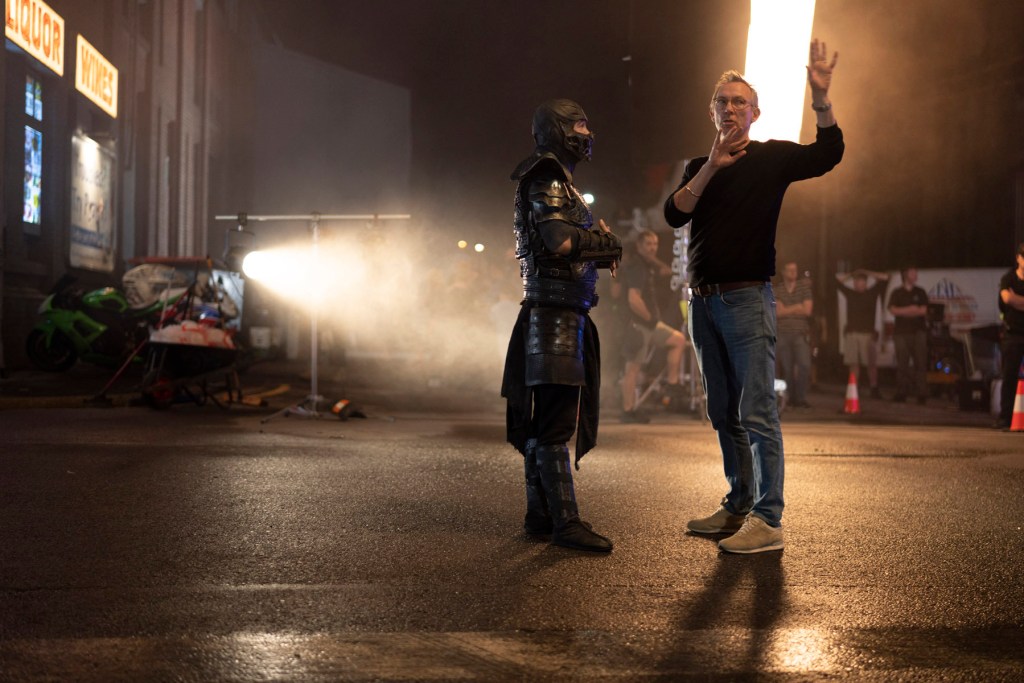
Exploding Heads and Blown Minds
At one point during my set visit, I found myself standing on a stunning recreation of the bridge that crosses the chasm on the iconic Mortal Kombat stage known as The Pit. It was a massive construction impressively built to serve as both a showcase piece and an actual set practically designed as the stage for one of the film’s fight scenes.
The team informed us that the general philosophy was to ensure that (almost) anything that could be done practically was done practically. A green screen was used sparingly to solve otherwise impossible problems. It’s an approach that appeases the old-school movie fans among us while honoring the raw nature of the older Mortal Kombat games which typically emphasized visceral visuals over more refined sensibilities.
The Mortal Kombat movie actually finds a fascinating middle ground between those concepts. For instance, the film’s costumes showcase the kind of wear and tear that you’d expect to see in outfits worn by warriors locked in an eternal battle, but they’re also designed to not only honor cultural concepts but the idea that some of this armor was designed to be somewhat ornamental at one point in time. They’re refined but appropriately ugly.
The film’s weapons are really on another level. Weapons have become increasingly important to the Mortal Kombat fighting styles over the years, and this film honors that concept through an arsenal of carefully constructed instruments of death that somehow treat even the most seemingly impractical of weapons with a logic that has perhaps only previously been dwelled on by the series’ biggest fans.
No detail was overlooked in pursuit of making sure every character had a weapon that the actor could hold in their hand and feel the power of. From ornate katanas to swords made of ice, the props team clearly fell in love with the opportunity to make even the absurd a reality. We even saw a garden gnome suspiciously snuck into the small arsenal they had crafted.
Again, though, what stood out most is the prop team’s insistence that many of these weapons didn’t just need to look good on-screen. Many of them needed to be balanced and practical enough to be used in battle simply because many of them were actually going to be used in the film’s fight scenes. I don’t know how the weapon designs will come across in the final film, but my gut feeling is that the fight scenes that they allow for will immediately be appreciated.
One other area where those efforts will almost certainly be immediately appreciated by everyone watching the movie is the makeup and practical effects. The makeup trailer I stepped in was loaded with masks, body parts, and the carnage of many early morning marathon makeup sessions. It looked closer to a horror movie than an action film or video game adaptation. That should be music to the ears of any fans that recognize that one of the things that helped the Mortal Kombat series stand out over the years are the horror tones that were used to help craft characters, stages, and most certainly the fatalities.
While we weren’t treated to a fatality viewing while on-set, the team was good enough to describe an exploding head that they were working on for an upcoming shoot. Where that exploding head will rank among the best of all-time (a list that includes films like Scanners, Maniac, and The Prowler) remains to be seen, but their approach sounded fascinating. By utilizing a silicone glass head filled with blood and guts and triggered by an air cannon, the scene figures to pay homage to the techniques of the best such effects of old while utilizing modern advancements designed out of necessity and perhaps a desire to help raise the bar.
It wasn’t long into my trip that the cast and crew emphasized the number of practical effects being utilized, and I certainly understand why. They not only look great, but the fact that so much effort went into ensuring these design elements offer something so much more than good looks seems to perfectly capture the spirit of the movie’s mission to make something that is so much more than it has to be.
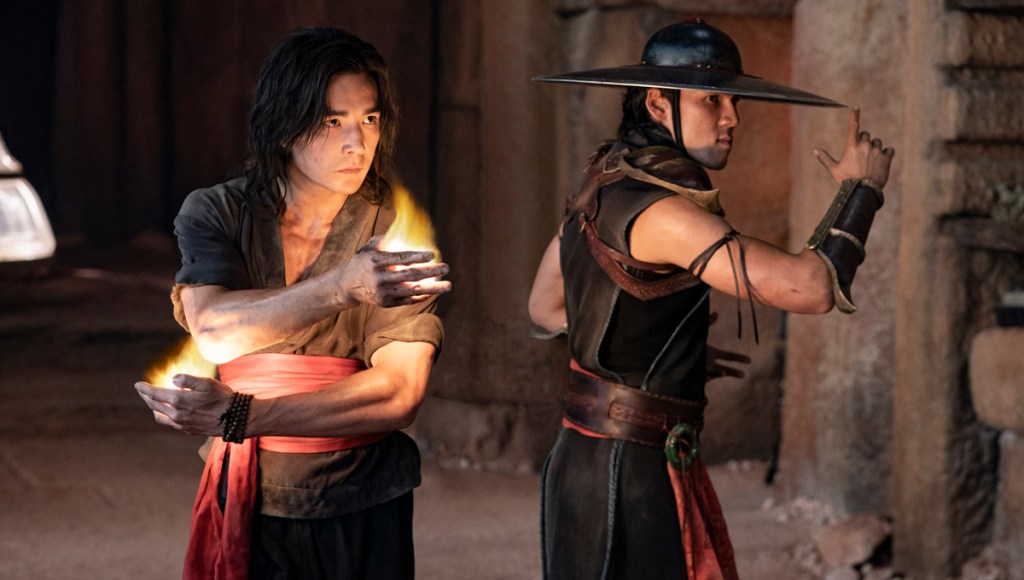
Flawless Victory?
If the biggest “advantage” of low expectations is the idea that even lesser efforts can somehow exceed them, then the biggest disadvantage of the expectations set by many live-action video game movies to date is getting people to genuinely feel excited. There’s a big difference between crafting something that makes you think “That could have been worse,” and making a movie that inspires the genuine belief that this isn’t just going to be something different; this is going to be something special.
The highest compliment I can pay to Mortal Kombat is that the genuine excitement expressed by everyone on-set went well beyond a cast and crew that were just happy to be there or felt that what they were doing was good enough. From those who couldn’t wait to play some of their favorite characters to those who were eager to finally showcase what they do best via a production that’s scale equaled the scope of their talents, there was a smile on everyone’s face as they told you what they were working on with the full knowledge that what they were about to say was something so far beyond what you expected.
I don’t know if Mortal Kombat will “break the curse.” I don’t even know if it will satisfy a legion of MK fans who have had their expectations forever raised by the recent games’ own increasingly cinematic efforts. What I can tell you is that it’s ok to feel excited about Mortal Kombat. Actually, you probably should be excited about Mortal Kombat. I can assure you that everyone working on the film very much is. That, in and of itself, is a victory.


